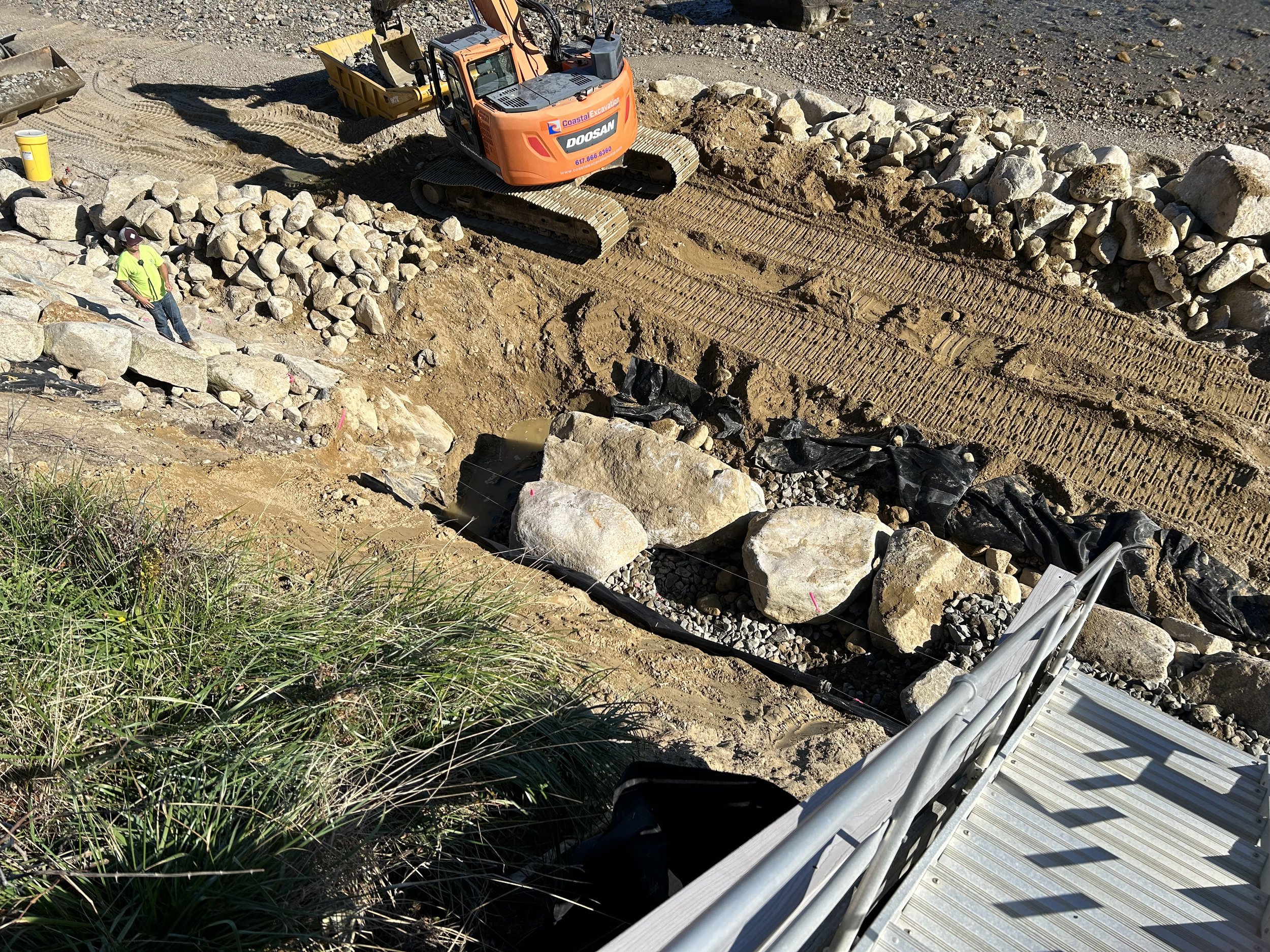Coastal & Marine Engineering
Coastal
Coastal and marine engineering services include specialized capabilities to manage and protect coastal areas from erosion, flooding, and other natural hazards while supporting sustainable development. We are instrumental in preserving and enhancing coastal areas while addressing the complex challenges posed by natural processes and human activities. Our team employs innovative solutions and strategies that aim to strike a balance between protecting infrastructure and ecosystems, fostering sustainable development, and ensuring the safety and resilience of our coastal communities in the face of changing coastal dynamics and climate-related challenges.
Scope of Coastal & Marine Engineering Services:
Shoreline Protection: Our team designs and implements measures to protect shorelines from erosion, such as constructing sea walls, revetments, groynes, and breakwaters that mitigate wave action and prevent land loss.
Beach Nourishment: Adding sand or sediment to eroded beaches to restore or enhance their width and volume, providing natural protection against storm surges and maintaining recreational areas.
Dune Stabilization: Implementing measures such as planting vegetation, creating natural dunes, and using sand fences to stabilize dunes, reducing erosion and protecting coastal communities from storm impacts.
Harbor and Port Development: Planning and designing harbors, ports, and coastal structures to facilitate safe navigation, efficient cargo handling, and protection against waves and currents.
Coastal Hazard Mitigation: Assessing risks from coastal hazards like storm surges, hurricanes, and sea-level rise, and developing strategies to mitigate their impacts on infrastructure and communities.
Climate Change Adaptation: Incorporating resilience measures to adapt to the effects of climate change, including rising sea levels, increased storm intensity, and shoreline retreat.
Environmental Conservation: Balancing coastal protection efforts with environmental conservation by considering the impact on ecosystems, habitats, and marine life when implementing engineering solutions.
Key Considerations:
Community Engagement and Stakeholder Collaboration: Involving local communities, government agencies, and stakeholders in planning and decision-making processes ensures that our solutions align with local needs and concerns.
Sustainability and Resilience: Emphasizing sustainable practices and developing resilient marine infrastructure that balances the needs of human development with the preservation of natural coastal processes and ecosystems.
Regulatory Compliance: Adhering to environmental regulations (e.g. EPA, Conservation Commissions), coastal zone management (CZM) laws, and permitting requirements when designing and implementing coastal projects.
Hydrodynamics and Sediment Transport: Understanding coastal hydrodynamics, wave patterns, tidal influences, and sediment transport processes are crucial for effective engineering designs.
Marine Engineering
Sea walls and soft solutions are vital components of coastal engineering. Our firm aims to protect coastal areas, infrastructure, and communities from erosion, flooding, and the impacts of rising sea levels. Our solutions employ a range of structural and non-structural measures to manage coastal erosion and mitigate the effects of coastal hazards. By employing a combination of hard and natural approaches, we strive to create resilient coastal environments that balance the protection of human-made structures with the preservation of natural ecosystems, ensuring the sustainable development and safety of coastal communities.
Sea Walls (Hard Engineering Solutions):
Structural Defenses: Sea walls are engineered structures built along coastlines to resist the force of waves and prevent erosion. They typically consist of concrete, rock, or steel barriers constructed parallel to the shoreline.
Revetments and Riprap: These are sloping structures made of rocks or concrete placed along the shoreline or at the base of sea walls to dissipate wave energy and protect against erosion.
Breakwaters: Offshore structures built parallel or at an angle to the coast to create calm waters near shore by breaking waves. They help protect harbors, beaches, and coastal developments from wave action.
Groynes: These are barriers or walls built perpendicular to the shoreline, extending into the sea, to trap sediment and prevent longshore drift, thereby stabilizing beaches and preventing erosion.
Soft Solutions (Natural and Nature-Based Approaches):
Beach Nourishment: Adding sand or sediment to eroded beaches to widen them and provide a buffer against wave action. It helps restore natural shorelines and enhances recreational areas.
Dune Restoration: Planting vegetation and building natural dunes along coastlines to act as a natural barrier against storm surges, reducing erosion, and protecting inland areas.
Living Shorelines: Incorporating natural elements such as marshes, wetlands, and oyster reefs to provide habitat, reduce erosion, and absorb wave energy while maintaining ecological functions.
Managed Retreat: This strategy involves relocating or adjusting development away from vulnerable coastal areas to reduce exposure to hazards like sea-level rise and storm surges.
Key Considerations:
Adaptation to Climate Change: Sea walls and soft solutions are crucial in adapting to the effects of climate change, such as rising sea levels and increased frequency of storms.
Environmental Impacts: Soft solutions focus on more environmentally friendly approaches by mimicking natural processes and preserving ecosystems, minimizing the disruption caused by hard infrastructure.
Long-Term Effectiveness: Our engineers consider the durability, maintenance requirements, and long-term effectiveness of these solutions in protecting coastal areas and infrastructure.
Community Engagement: Involving communities and stakeholders in decision-making processes regarding coastal protection measures ensures that solutions align with local needs and concerns.





